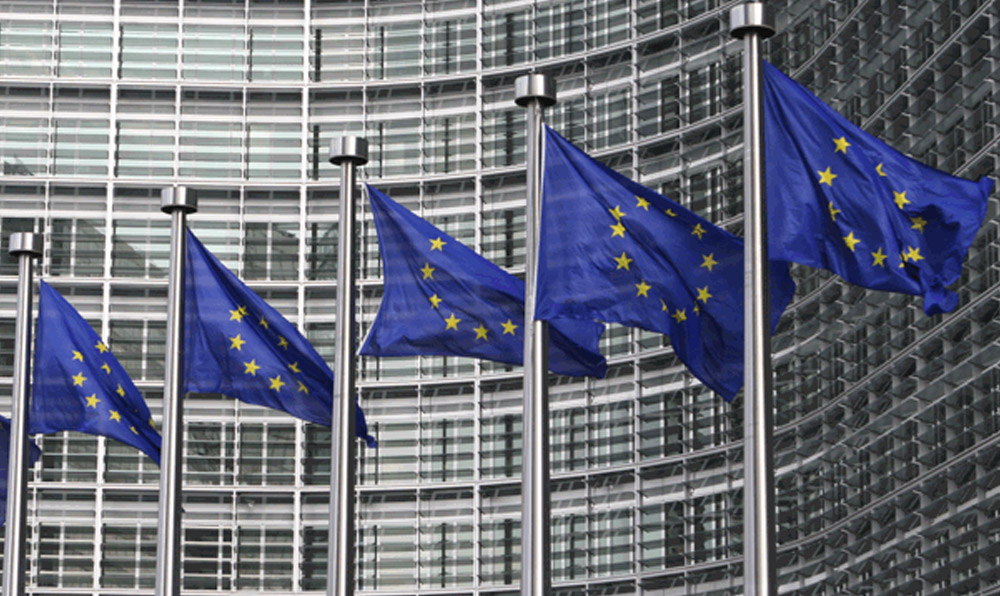In May 2025, a UK exporter agreed to pay £1.16 million ($1.55million dollars) to HM Revenue & Customs (HMRC) for violating Russia sanctions a record-breaking compound settlement that has sent shockwaves through the compliance community.
This unprecedented penalty highlights a critical reality that enforcement is escalating fast, and businesses of all types and sizes face rising risks if they fail to keep pace with sanctions and export control regulations.
Whether you lead a trade compliance team or advise clients as legal counsel, this case underscores an urgent need to reassess your export control processes and readiness.
Key Takeaways
- UK exporter hit with record £1.16 million fine for breaching Russia sanctions enforcement
- HMRC’s growing use of compound settlements highlights escalating risk in sanctions breaches
- Dual-use goods and re‑exports via intermediaries pose hidden compliance dangers
- UK, EU & US now coordinate sanctions enforcement with exporters face overlapping obligations
- Robust compliance requires real-time screening, classification, end‑use checks, training and audit
- Automation and voluntary disclosure can mitigate penalties but manual systems are no longer enough
The Story Behind the UK’s Largest Export Control Fine
According to the UK Government’s Notice to Exporters 2025/18, the exporter supplied goods to Russia in breach of The Russia (Sanctions) (EU Exit) Regulations 2019.
Rather than facing criminal prosecution, the company reached a compound settlement, which is a negotiated administrative resolution in which it accepted liability and agreed to pay the penalty. Here are some things to note:
- £1.16 million is more than twice the value of any previous UK export control settlement.
- HMRC stressed that this reflects the heightened enforcement priority since Russia’s invasion of Ukraine.
- The case joins a growing list of recent settlements, including a £374,000 penalty for unlicensed dual-use exports and a criminal conviction resulting in an £89,000 fine.
How Enforcement of Export Controls and Sanctions Works
To many businesses, the process can feel opaque. But understanding it is vital to manage risk effectively.
Below is a step-by-step view of how enforcement typically unfolds:
- Detection or Disclosure
- HMRC, Office of Technology and Solutions Integration (OTSI) or the Export Control Joint Unit (ECJU) detect potential breaches via customs data, intelligence, or whistleblowers.
- Companies sometimes make voluntary disclosures, which can significantly mitigate penalties.
- Investigation
- Authorities request records: shipping documentation, contracts, communications, and internal procedures.
- Employees and directors may be interviewed under caution.
- Settlement Offer
- For less severe or negligent breaches, HMRC offers a compound settlement instead of prosecution.
- Acceptance results in a financial penalty but no criminal record.
- Prosecution
- Where breaches are egregious or settlements are declined, cases proceed to criminal court.
- Convictions can lead to unlimited fines and prison sentences.
Global Enforcement Trends in Trade Compliance: How the UK Compares
The UK is far from alone in ramping up sanctions enforcement. Trade compliance is now a multi-jurisdictional minefield, with regulators coordinating more closely than ever.
| Jurisdiction | Maximum Fine | Enforcement Authorities | Recent Example |
| UK | Unlimited | HM Revenue and Customs / Export Control Joint Unit | £1.16m Russia sanctions settlement (2025) |
| US | $1m+ per violation | Office of Foreign Assets Control (OFAC)/ Bureau of Industry Security (BIS) | $508m OFAC settlement (2023) |
| EU | Varies by member state | National export authorities | €13.6m fine in Lithuania (2024) |
If you export globally, you must understand how UK, EU, and U.S. sanctions overlap and how enforcement agencies share intelligence.
Hidden Risks: Supply Chains, Dual-Use Goods, and Re-Exports
One of the biggest misconceptions is that sanctions only apply to direct exports. In reality, risk often lurks in:
- Intermediaries: Third-party distributors or resellers may re-export your goods to sanctioned destinations without your knowledge.
- Re-exports: Your product can be incorporated into another system destined for a sanctioned country.
- End-use violations: Even legitimate shipments can breach rules if used for prohibited military or dual-use purposes.
Example:
A UK company ships dual-use components to an EU partner. The EU firm resells them into Russia, violating sanctions.
Despite no direct shipment, the UK exporter can face enforcement action for failing to exercise due diligence.
Is Your Compliance Program Set Up Correctly?
The best way to avoid enforcement is to build and maintain a mature, defensible compliance program a helpful resource is our eBook “7 Steps To Implementing A Successful Internal Compliance Programme”
Here’s a quick checklist to benchmark your readiness:
- Restricted Party Screening: Screening is conducted regularly (not just during onboarding), and data sources are updated frequently (not annually)
- End-Use & End-User Checks: Documented and independently verified
- Training: Evidence of mandatory staff training across functions
- Escalation Protocols: Clear process for red flags
- Independent Audits: Periodic review of procedures
- Automation: Systems integrated with Enterprise Resource Planning (ERP) and other business platforms, that are not reliant on manual spreadsheets or processes
If you fall short on any of these, you have a known vulnerability.
What’s Next? Enforcement and Legislative Trends
As geopolitical tensions and regulatory expectations continue to rise, the UK, EU, and US are sharpening their focus on several critical areas of trade compliance. Over the next year, companies can expect increased enforcement and tighter rules designed to address both security and policy priorities.
One major area is Russia sanctions circumvention. Authorities are zeroing in on re-exports routed through third-party countries, transactions designed to disguise the ultimate destination of goods and technology. Regulators are determined to crack down on these indirect channels, and businesses involved in moving shipments through intermediary nations will face growing scrutiny.
Emerging technologies and cyber surveillance tools are also high on the export control enforcement agenda. Advanced semiconductors, artificial intelligence (AI)-powered software, encryption products, and sophisticated monitoring systems are seen as central to both national security and human rights risks. Controls on these products are evolving quickly, making it essential for exporters and logistics providers to stay current and ensure classifications and licenses are up to date.
Military and dual-use goods have always been a high priority and will continue to be, such as components that can serve both civilian and defence applications including aerospace parts, electronics, sensors, and certain chemicals. Regulators expect businesses to exercise rigorous due diligence and end-use verification before moving these items across borders.
Finally, companies operating internationally should prepare for more coordinated oversight. The UK, EU, and US are increasingly coordinating enforcement priorities, sharing intelligence, and pursuing parallel actions to tighten export controls and sanctions compliance.
This means compliance programs can no longer focus on just one jurisdiction, they must account for overlapping obligations and be ready to demonstrate a consistent approach to screening, classification, and recordkeeping.
Staying ahead of these priorities will require more than good intentions. It demands proactive systems, current data, and a commitment to building compliance into every transaction, not treating it as a checkbox exercise.
Five Practical Steps to Strengthen Export Controls Compliance
Here are five immediate actions to strengthen your export control program and prepare for closer scrutiny:
- Map your supply chain in detail.
Build a clear picture of where your goods, parts, and technology flow, especially where they may be re-exported or routed through third countries. Document any touchpoints in higher-risk jurisdictions. This visibility is critical for identifying potential sanctions circumvention and end-use risks before regulators do.
- Update and expand your screening lists.
Relying on static or outdated denied party lists should never be an option. Implement real-time screening that automatically updates as new sanctions, entity designations, and export restrictions are issued. Include not just direct customers and suppliers but also beneficial owners, intermediaries, and logistics partners.
- Review, update, and document your compliance program.
Regulators increasingly expect you to prove that policies aren’t just on paper. Audit your procedures for export classification, licensing, and due diligence. Retain clear records of who conducted screenings, how decisions were made, and when updates were applied. A well-documented program is your strongest defence in an investigation.
- Assess whether a voluntary disclosure is appropriate.
If you uncover past violations whether it’s misclassified shipments, unlicensed exports, or dealings with sanctioned parties, consult your legal counsel about voluntary disclosure. Self-reporting can often lead to significantly lower penalties and will demonstrate good faith cooperation. - Invest in compliance automation and integration.
Manual processes like spreadsheets and email-based checks are unfit to achieve meaningful export control objectives. Consider tools that integrate screening, classification, and recordkeeping directly into your workflows. Automation not only reduces errors but also shows regulators you’re taking reasonable steps to stay compliant as regulations evolve. business, but they’ll become trusted, strategic partners in the supply chain.
New Era of Sanctions Enforcement
The £1.16 million settlement is not an anomaly it’s a new benchmark in the UK’s export controls landscape.
In an era of geopolitical upheaval, trade compliance is no longer a back-office function. It’s a frontline risk requiring investment, vigilance, and strategic focus.
Failing to act is no longer an option.
How Descartes can Help Optimize Export Control Processes
In closing, the record-setting £1.16 million settlement serves as a stark reminder that UK export control and sanctions enforcement has entered a new era one where efforts to curb Russia sanctions evasion, decode complex dual-use regimes, and track re-exports are pursued relentlessly.
To stay ahead, UK exporters must build trade compliance programs that are robust, auditable, and technology‑enabled: comprehensive screening of denied parties, rigorous classification of dual-use goods, proactive end-use verification, and seamless record keeping. The integration of Descartes Visual Compliance™ and Descartes OCR Global EASE™, offer precisely that—automating license determination, denied-party screening, and export documentation to embed compliance directly into your supply chain. In a landscape of escalating penalties and coordinated enforcement across the UK, EU and US, compliance is no longer optional, it’s a strategic asset. With stronger systems and smarter processes, UK businesses can transform export controls from a source of risk into a foundation for global competitiveness.




